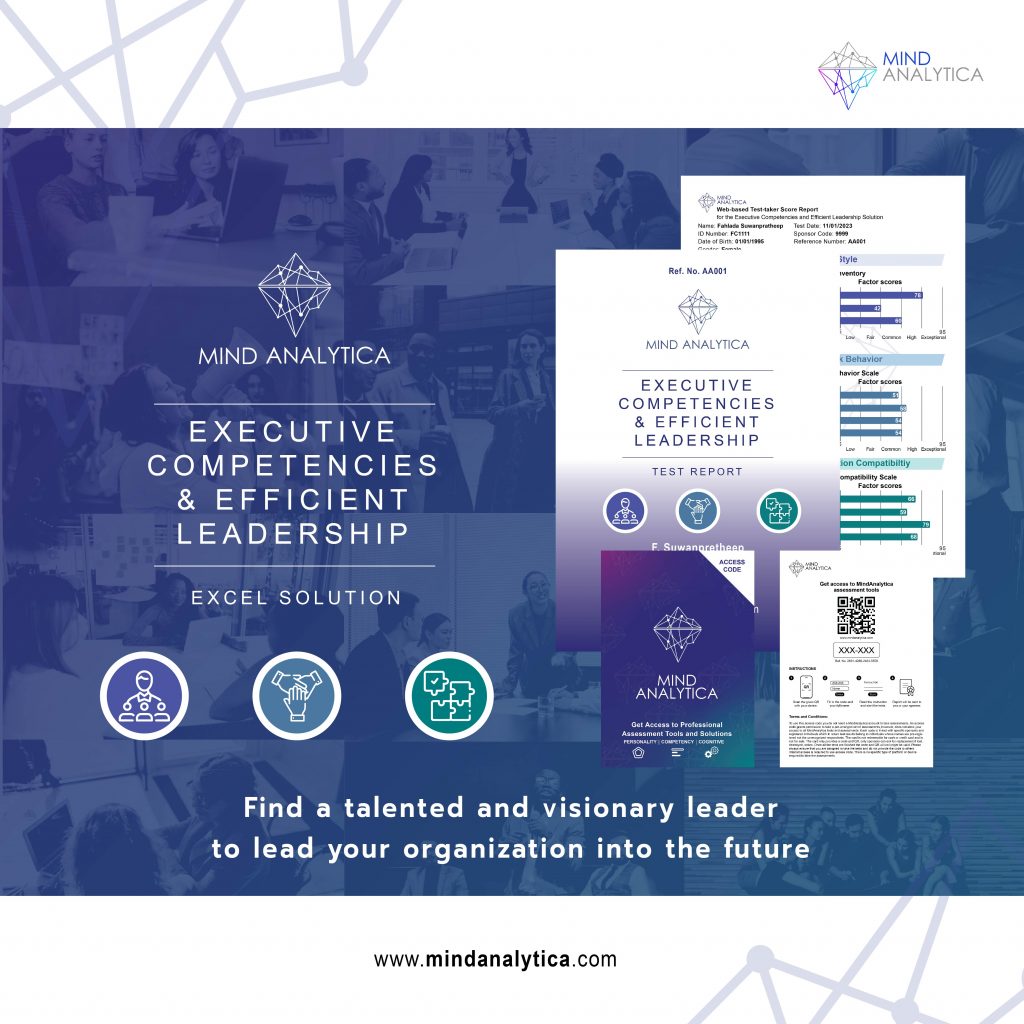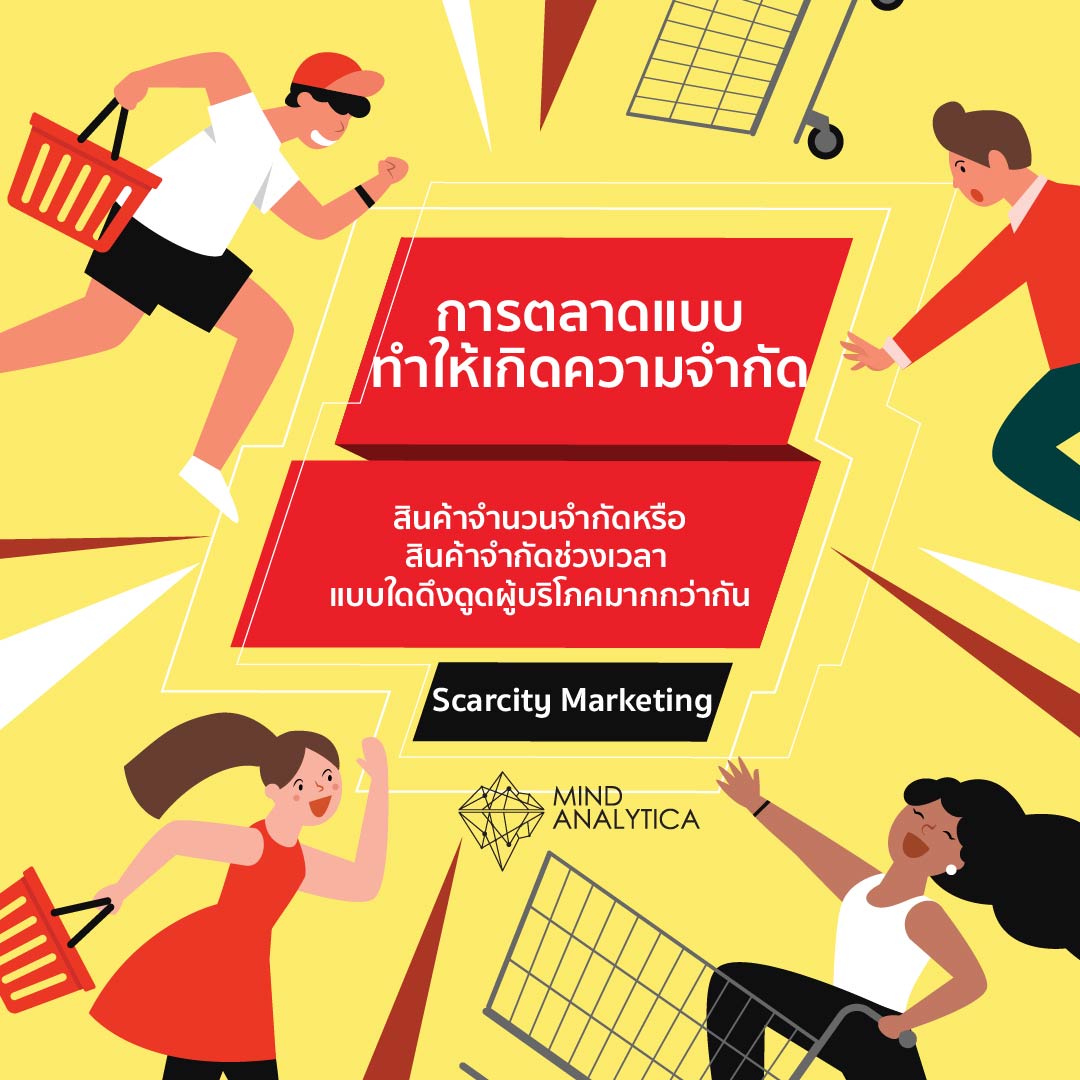Person-Organization Fit
22 มีนาคม 2566 - เวลาอ่าน 6 นาที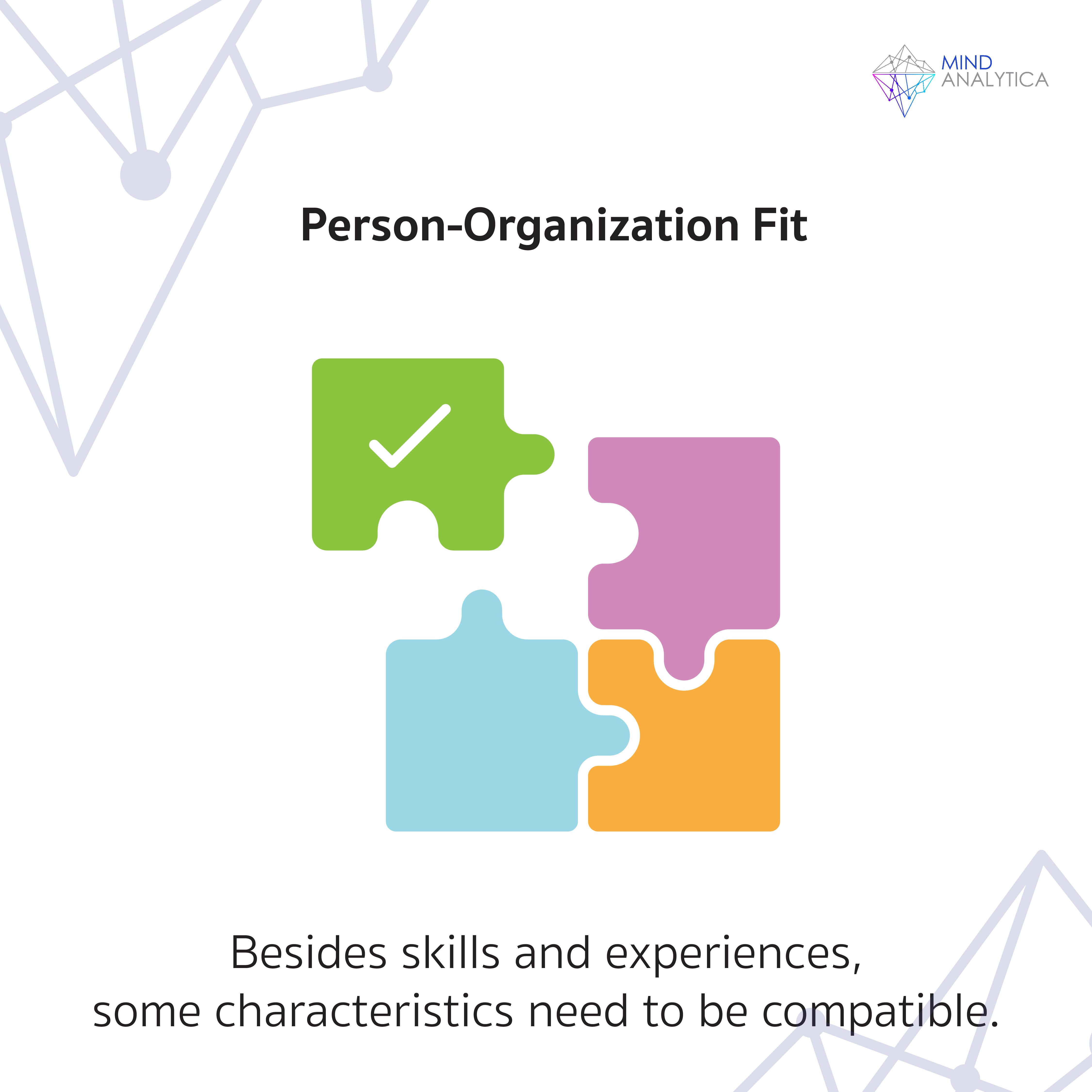
The dream of every working-age person is to work in a place suitable for their own life, where they are desired by the organization, and the organization understands their way of life. Psychologists have researched the compatibility between employees and organizations for a long time. They have found precise results: if employees and organizations are well-suited, job satisfaction increases, employees are more committed to the organization, have higher engagement, and are less likely to want to leave (less turnover intention). However, the term "fit" is a broad term with many details. This article will explore the different types of person-organization fit and how they differ.
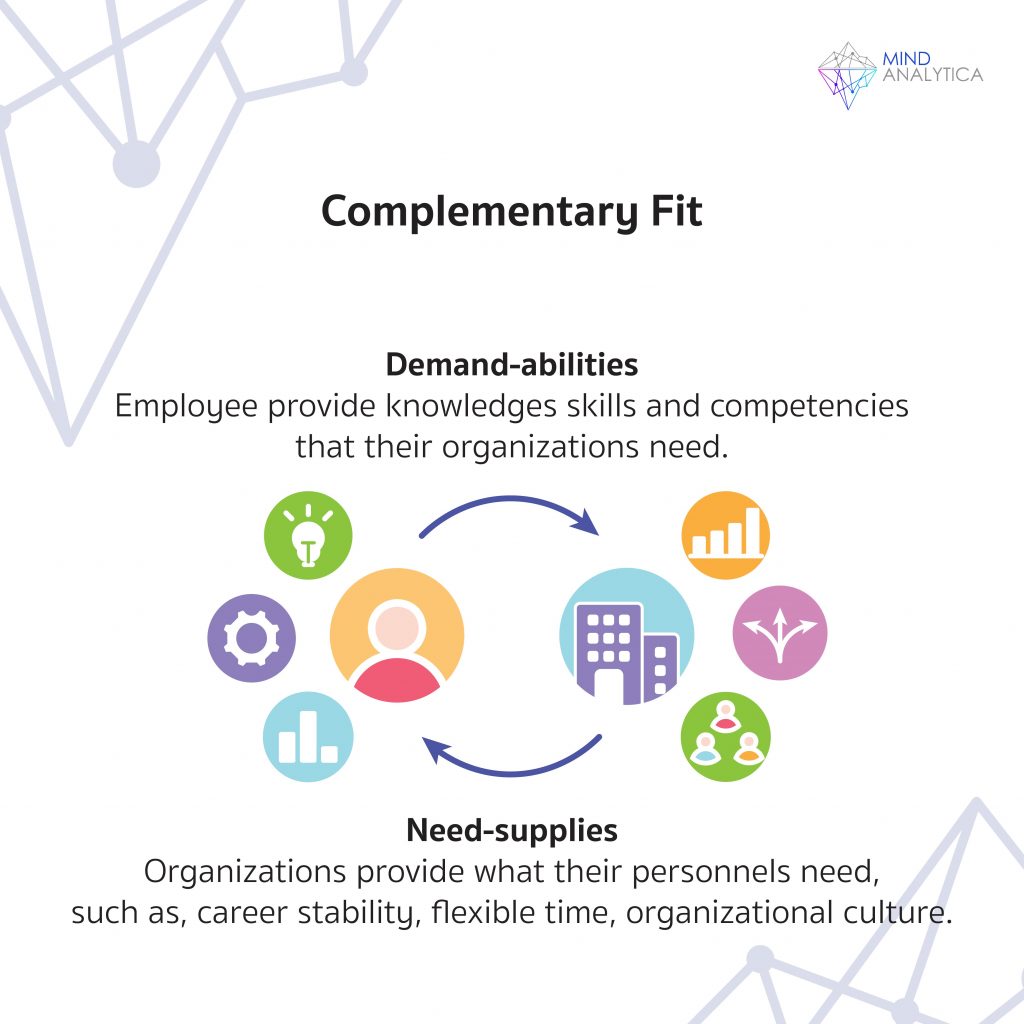
- Complementary fit
This type of fit is when one party has what the other party wants, which can be divided into 2 subcategories:
1.1 Dream employee or, in academic terms, an employee with the capabilities the organization wants (Demand-Abilities). This means the employee has the knowledge, skills, and abilities the organization wants. For example, a salesperson has communication skills and can persuade others.
1.2 Dream organization or, in academic terms, an organization that provides what the employee wants (Need-Supplies). This means that the organization has what the employee wants, such as being a large, stable organization, having flexible working arrangements, or allowing time for family.
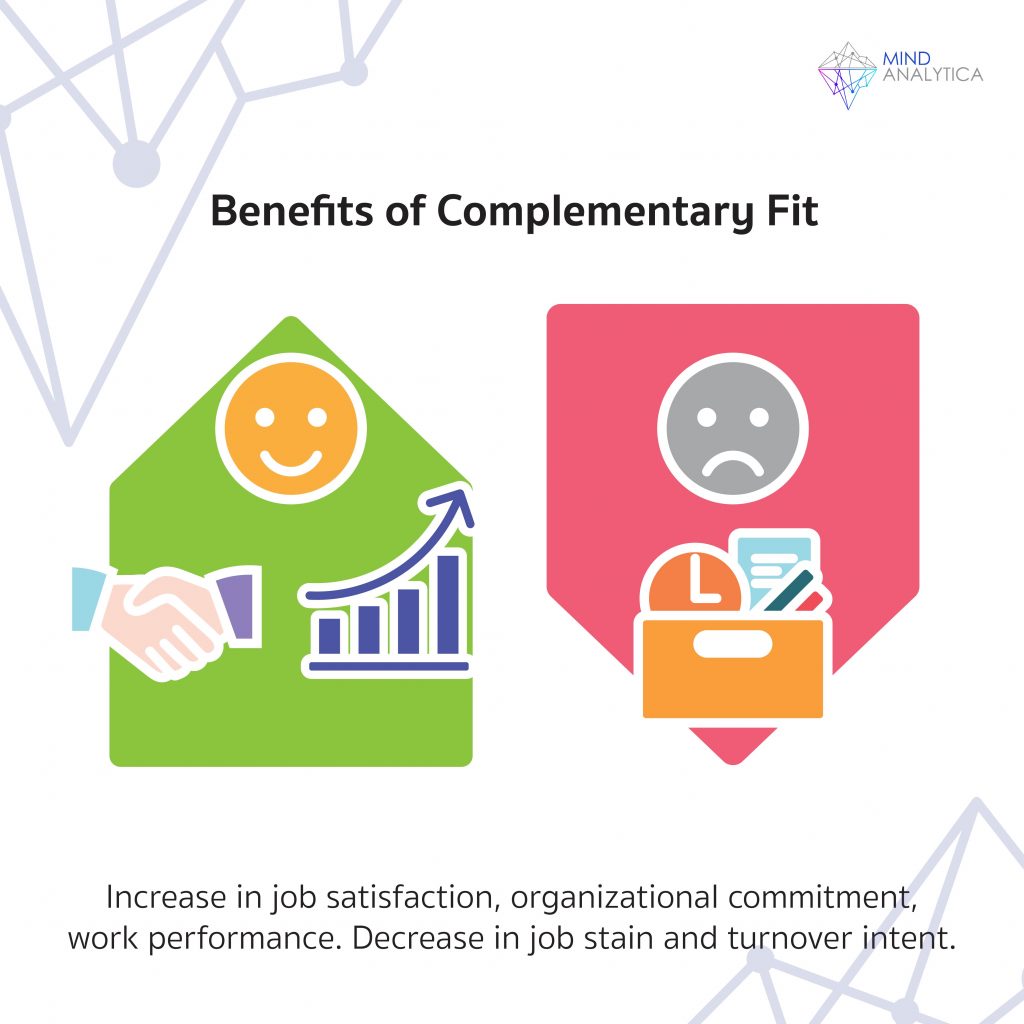
If high, both types of complementary fit tend to result in increased job satisfaction, higher commitment to the organization, less likelihood of quitting, less stress (strain), and better job performance. In summary, it is beneficial for both parties. However, the dream organization has a more positive influence than the dream employee. In academia, the complementary fit may be called the person-job fit.
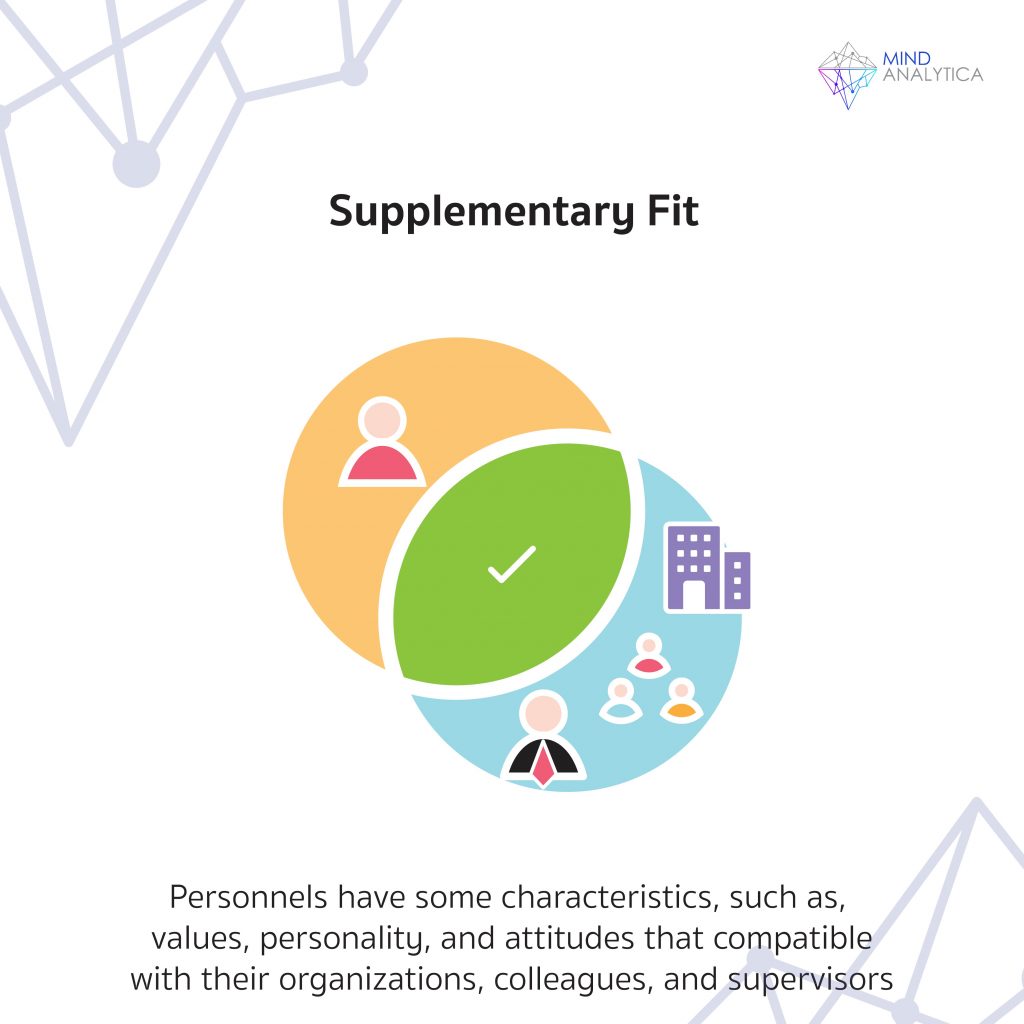
2. Supplementary fit
This type of fit occurs when both parties have similar characteristics, including values, personality traits, and attitudes. Some literature may include basic information such as gender, age, etc. There are 3 subcategories of supplementary fit:
2.1 Employee and organization (Person-organization fit) refer to whether the employee's personality and traits match the organization's culture. For example, a highly goal-oriented organization that expects high performance from employees would be a good fit for employees with a strong desire for success; an organization with a clear hierarchical structure would be suitable for employees who desire power and authority.
2.2 Employee and other team members (Person-group fit) refer to the similarity of an employee's personality and traits with those of the team members. For example, if an employee is responsible and their coworkers are also responsible, or if an employee values family and their coworkers also value family.
2.3 Employee and supervisor (Person-supervisor fit) refer to the similarity of an employee's personality and traits with their supervisor. For example, if a supervisor is detail-oriented and meticulous, and the employee shares these qualities, or if a supervisor is creative, the employee is also creative.
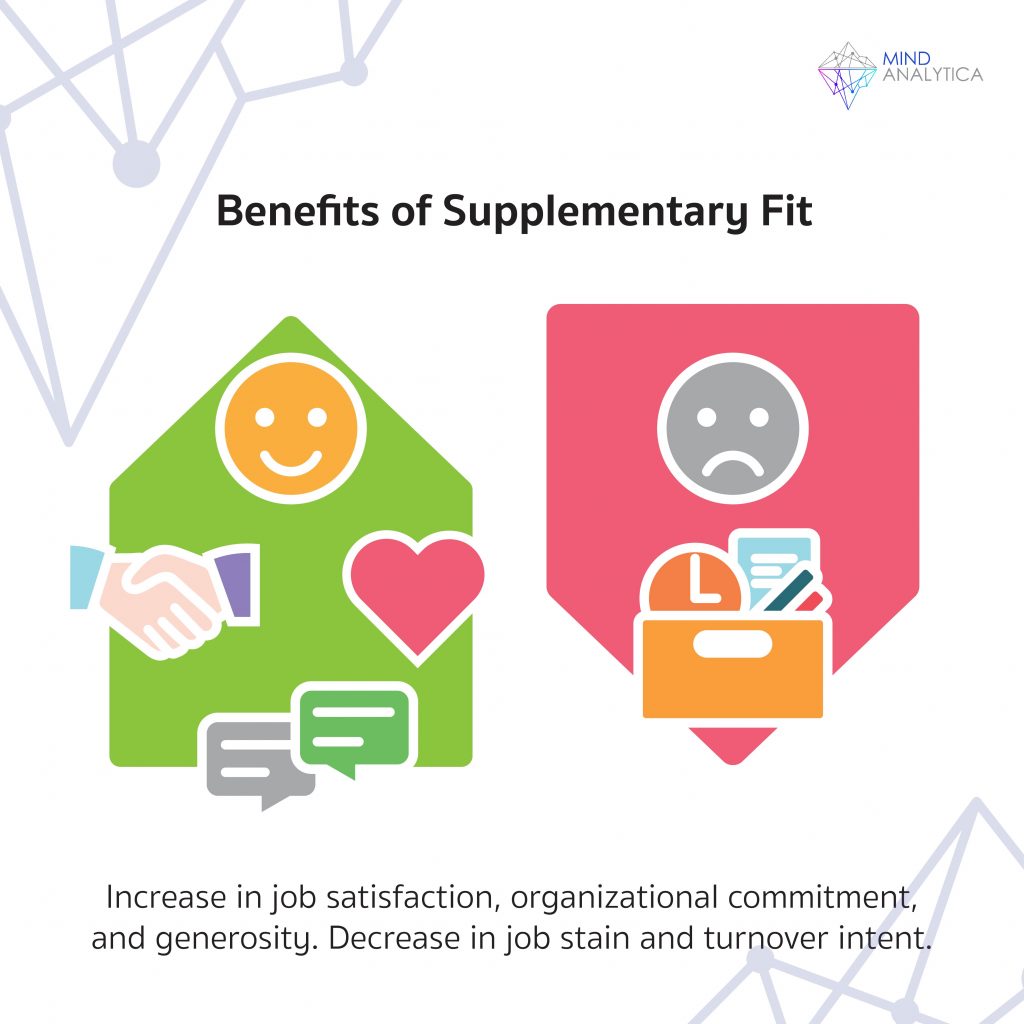
The different aspects of supplementary fit have various effects. If an employee is similar to the organization, they will experience increased job satisfaction, commitment, and a decreased likelihood of wanting to leave. However, if an employee is similar to their group or team, they will have increased satisfaction with their coworkers and show more empathy and support. If an employee is similar to their supervisor, they will have increased job satisfaction, be more satisfied with their supervisor, and have better communication and exchange with them.
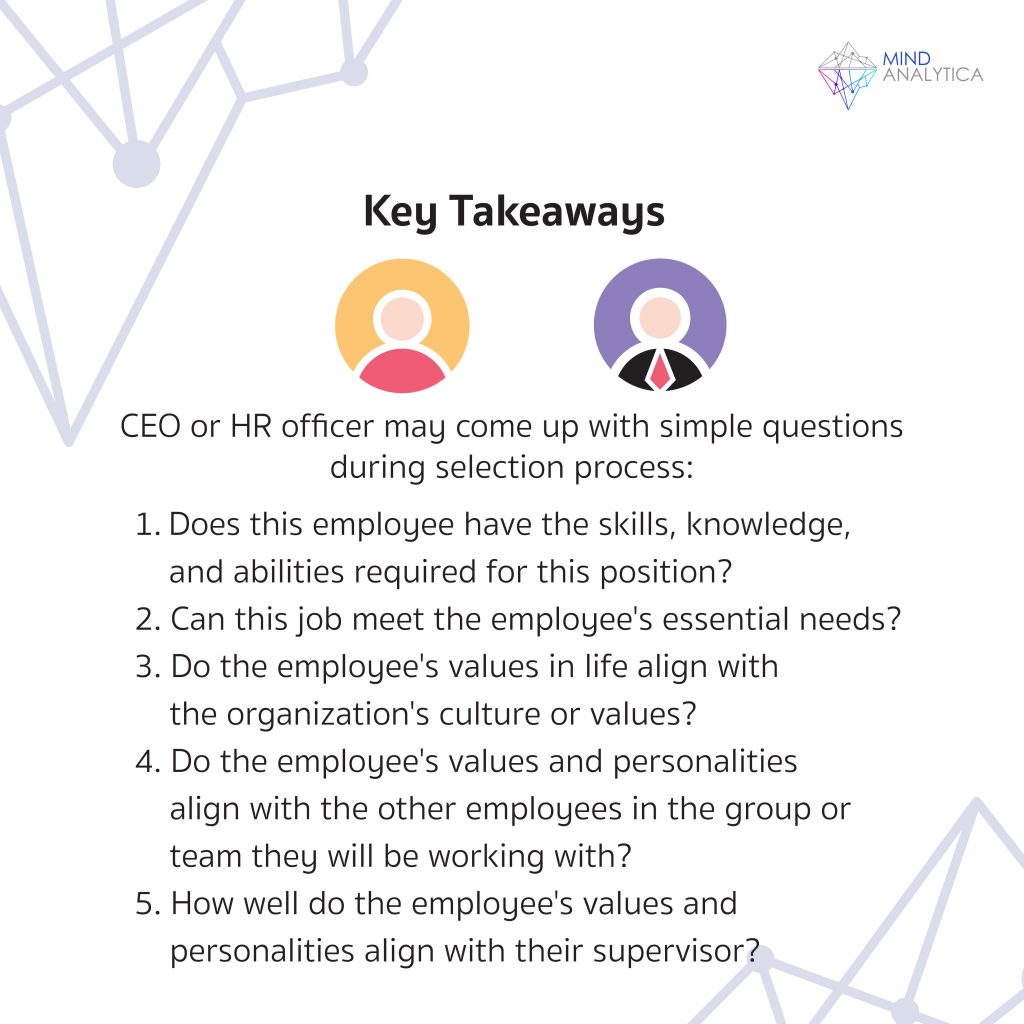
Given the importance of employee-organization fit, why don't we select people more likely to be suitable for the organization? Why don't we choose supervisors more likely to be ideal for the team? We can ask simple questions to help us make decisions in human resources management, as follows:
- Does this employee have the skills, knowledge, and abilities required for this position?
- Can this job meet the employee's essential needs?
- Do the employee's values in life align with the organization's culture or values?
- Do the employee's values and personalities align with the other employees in the group or team they will be working with?
- How well do the employee's values and personalities align with their supervisor?
If we overlook these factors, there is a chance that we will end up with dissatisfied employees, employees who want to quit soon after taking a position, employees who do not get along with their colleagues, employees who do not have a good relationship with their coworkers, and employees who do not get along with their supervisors. This can lead to finding new people or addressing internal team issues later on, or worse, losing a valuable employee from a promotion to a supervisory position. Are there any tools to help screen job applicants or select personnel to be promoted as supervisors to see if these people are suitable for new leader jobs and whether they fit well with the organization, team members, or senior management?
The Excel solution developed by MindAnalytica includes an evaluation component that checks whether target employees are suitable for various types of organizations. It assesses the employee's values in life and personality, evaluates the complementary fit to see if what the employee wants in life aligns with what the job provides, and assesses the supplementary fit to determine how closely the employee's values align with the organization's culture, how closely their values and personality align with the team members, and how closely they align with their supervisor. This helps you better understand each employee and use the information to make informed decisions about who is suitable for critical positions in your organization.
